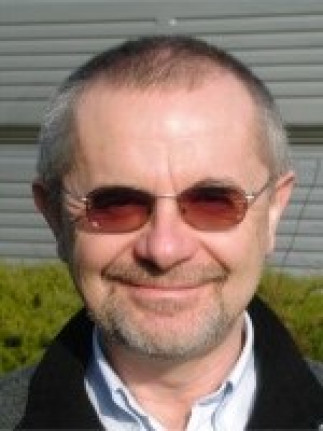Titre: Nanoscale Infrared Spectroscopy: applications in biology –LHCII proteins and Amyloids
Endroit : Pavillon J.-Armand Bombardier, salle 1035 à 14 h
Hôte : Michel Lafleur
Cette conférence sera prononcée (en anglais)par le Professeur Andrzej J. Kulik du Laboratoire de Physique de la Matière Vivante de l'École polytechnique fédérale de Lausanne.
Résumé:Classical Infrared Spectroscopy has two limitations – source power and poor spatial resolution. Major improvements became available recently. Chemical analysis with high spatial resolution is bringing new information, when samples are inhomogeneous or when only very small quantity is available. Using tunable, pulsed Infrared (IR) laser as a source and contact AFM as a detector, one is able to measure local IR absorption by measuring the local thermal dilatation of the sample, and enhancing it using resonances of AFM cantilever. This technique measures reliable IR spectra with spatial resolution downto10 nm [2]. Complementary functional imaging of local IR absorption at fixed wavelength, proved to be very useful. Simultaneously, frequency of AFM cantilever in contact with the sample, is mapping local stiffness.
During this talk, I will describe the technique and discuss two biological applications: i) Light Harvesting Proteins (LHCII) are responsible for photosynthesis. Embedded in artificial lipid membrane, they form characteristic pillars, when extracted from the leaves grown in shadow, improving efficiency of photosynthesis. On the other hand, LHCII extracted from leaves grown in sunshine are not forming pillars, since enhancement of the efficiency is not needed [1]. ii) Amyloids are insoluble aggregates of proteins related to neurodegenerative diseases. Several examples of measurements of Amyloid fibrils will be equally presented, together with an assessment of the technique – nanoIR [3]. The nanoIR showed that ataxin-3 misfold after it aggregates, not before as would be expected by current views on aggregation [4]
[1] E. Janik et al., The Plant Cell, 2013, 25, 6, 2155-2170.
[2] W.I: Gruszecki et al. Nanoscale, 2015,7, 14659-14662 DOI: 10.1039/c5nr03090k
[3] T. Müller et al. Lab Chip, 2014, 14, 1315-1319
[4] F.S. Ruggeri et al., Nature Communications 2015, 6, 7831, doi:10.1038/ncomms8831

